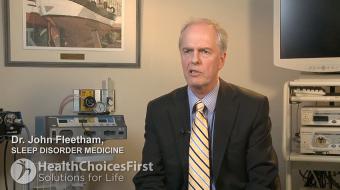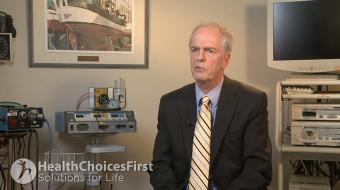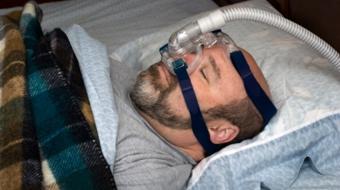
Related Treatment Videos
Treatment:
Snoring and mild sleep apnea are usually treated in the office under local anesthesia, either by:
a) a) Implanting rods of woven polyester in the soft palate (Pillar Implant Proceedure or PIP) stiffens the palate and prevents it from vibrating in snoring and sleep apnea. Fibrous tissue surrounds the implants over a period of 3 months or so, creating further stiffness. 3 implants are required, each inserted with its own sterile handpiece. This is done under local anaesthetic in the office in about 20 minutes. Most patients resume normal diet and activity the same day. The implants can be removed if unsatisfactory to the patient, though this is rare. 15 month follow up studies show very little relapse.
b) Thinning and stiffening the palate with a probe (Radio Frequency Palatal Myoplasty or RPM), also known as somnoplasty or Radio Frequency Ablation. This takes only a few minutes, and immediate return to normal activities is possible afterwards. It must be done several times, usually three, four to six weeks apart. There is no significant pain during or after the treatment.
c) Removal of the uvula and some of the back palate by laser (Laser Assisted Uvulopalatoplasty or LAUP). This is done once only and takes about thirty minutes. Some recovery time may be needed.
d) More severe sleep apnea may require throat surgery (uvulopharyngopalatoplasty or UPPP) under general anesthesia in a hospital or clinic setting. Genioglossal Advancement (GGA) may be done with this proceedure in selected patients.
e) Tongue Base Radiofrequency (TB Rf) removes some of the exceesive tissue at the back of the tongue, and is done under local anaesthesia in the office.
f) Nasal and Jaw surgery according to individual requirements.
g) Non-Surgical Management. It is an axiom of the the Sleep Surgery Centre that treatment should be tailored to the individual. For some patients non- surgical treatment will be more appropriate. Referal for dental appliance fitting, CPAP therapy or other forms of treatment are readily and frequently made from our facility. Because there is only one optimal form of treatment for each patient, to be arrived at only after full endoscopic exam of the uper airway and interview with the individual, we believe a multidisciplinary approach is essential: we therefore work closely with CanSleep Services Inc. who provide, though their staff and consultants, all the non-surgical services, as well as diagnostic testing, required by our patients. In some cases, moreover, it is important to have non surgical treatment as an adjunct to surgical, for instance CPAP as a pre and post operative intervention to increase surgical safety. Integrated management is central to to our care.





